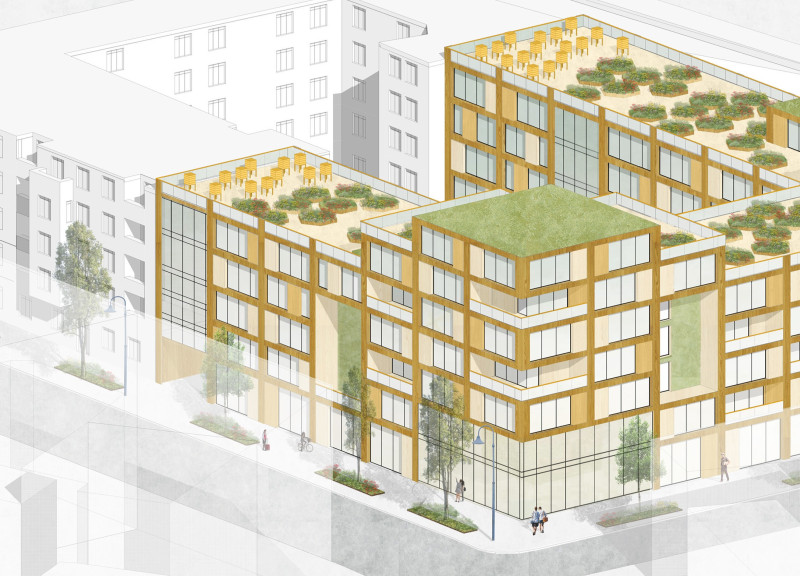5 key facts about this project
The P-Dox project, situated in Berlin, represents a modern approach to affordable housing within urban settings. The design emphasizes modularity, sustainability, and community engagement, providing flexible living solutions in response to the evolving needs of residents. The architecture integrates natural elements, optimizing both functionality and aesthetics while addressing the challenges of urban density.
Modular Design and Adaptability
The P-Dox project’s architecture employs a modular design that allows for a variety of unit configurations. Each living space can be adapted to accommodate different household sizes, from individuals to families. This adaptability sets it apart from traditional housing projects, where unit sizes and layouts are typically fixed. The use of cross-laminated timber as the primary structural material enhances sustainability and reduces environmental impact, contributing to the overall efficiency of the building.
The incorporation of large glass facades throughout the design maximizes natural light exposure and creates a seamless connection between indoor and outdoor spaces. This feature is not only beneficial for the well-being of the residents but also facilitates views of the surrounding urban landscape, fostering a sense of belonging within the community. The ground floor is designed to support commercial activities and communal facilities, further intertwining the residential experience with the local environment.
Green Integration and Community Focus
A defining characteristic of the P-Dox project is its commitment to integrating green spaces. Rooftop gardens and landscaped areas foster biodiversity while also serving recreational purposes for residents. These elements are strategically placed to promote social interactions, encouraging a sense of community among inhabitants.
The project’s location in Berlin provides easy access to public transportation, educational institutions, and recreational areas, enhancing its appeal as a practical housing solution. The seamless integration of residential, commercial, and communal spaces creates a vibrant living atmosphere that aligns with modern urban lifestyles. By prioritizing engagement with nature and maximizing flexibility, the P-Dox project demonstrates a thoughtful response to current and future housing demands.
For those interested in understanding the intricate details of this architectural endeavor, exploring the architectural plans, architectural sections, and architectural designs will offer deeper insights into the innovative ideas that shaped the project.





















































